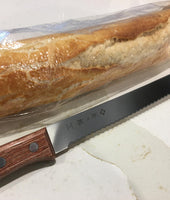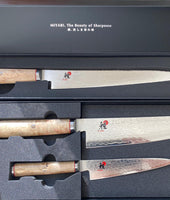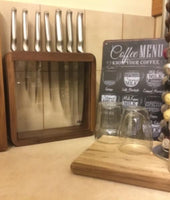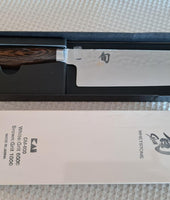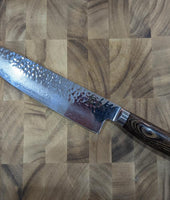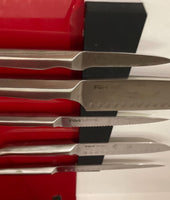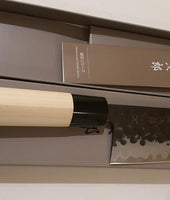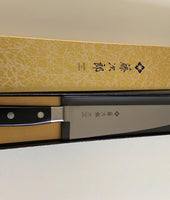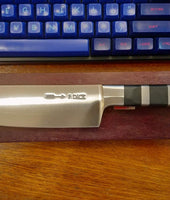Have you ever heard the terms sharpening and honing kitchen knives? Are these terms interchangeable or is there a difference? If you want to keep your knives sharp and in good condition for a long time, you'll soon find out that it's not only important to understand the difference, but that both serve an important role.
A dull knife forces you to exert more brute force to slice or chop, increasing your chances of having an accident. Therefore it is important to 1) buy a good quality knife, 2) buy a good knife sharpener and honing rod, and 3) know how and when to hone and sharpen your knives to keep them in optimal condition.
The article below will help you to understand the difference between honing and sharpening.
What is honing?
The blade of a knife comes to a sharper point from the bevel, however with regular use from cutting and chopping food, the bevel starts to bend by a certain extent. Although users may not be able to observe this bend, with time, it starts affecting the performance of the knife. In order to correct this issue, you may need a honing rod or honing steel that can bring the knife edge to a straight position again.
Experts advise honing kitchen knives almost every day, especially if you are using them more frequently. Proper honing routines can reduce the sharpening needs of knives as irregular routines can dull the blades.
It is observed that sharpening may cause degradation of the knife because during sharpening process you actually end up removing some microscopic metal particles from your knife’s blade. With repeated sharpening, you may end up reducing a considerable amount of metal from Japanese knives.
Note that, there are a wide range of honing rods available on the market; you can easily find one to keep your knives in the right shape. Some of the most popular options are steel honing rods, ceramic honing rods, and diamond honing rods.
What is sharpening?
It is probably clear to you now that honing and sharpening are two different procedures and both have their own importance for kitchen knives. Note that, it is also important to sharpen the knives from time to time, but at the same time, one needs to understand that over-sharpening can also ruin their quality.
Experts reveal that if you hone your knives on a regular basis, you are only required to sharpen your knives once every two to three months. However, if you are using your knives heavily; like for professional culinary needs at your food business, the chances are you will need to sharpen them more often.
There are different methods to sharpen kitchen knives. Some people prefer to execute this task manually; however, professional chefs are more comfortable with electric sharpeners. In order to avoid ruining the blades of your knives, it is always important to sharpen them at the right angle. The most preferred choice is to sharpen them at 15 to 20 degrees.
You can find our range of knife sharpeners and whetstones as well as more information here.

Also Check Out: Nakiri Knives - What Is the Nakiri Knife Used For?
Explore More Products: Musashi Aogami-Super Rosewood Paring Knife 13.5cm | Musashi Aogami-Super Western Handle Chef Knife 21cm | Musashi Aogami-Super Sakura Wood Paring Knife 15cm | Musashi Aogami-Super Western Handle Santoku Knife 18cm


























